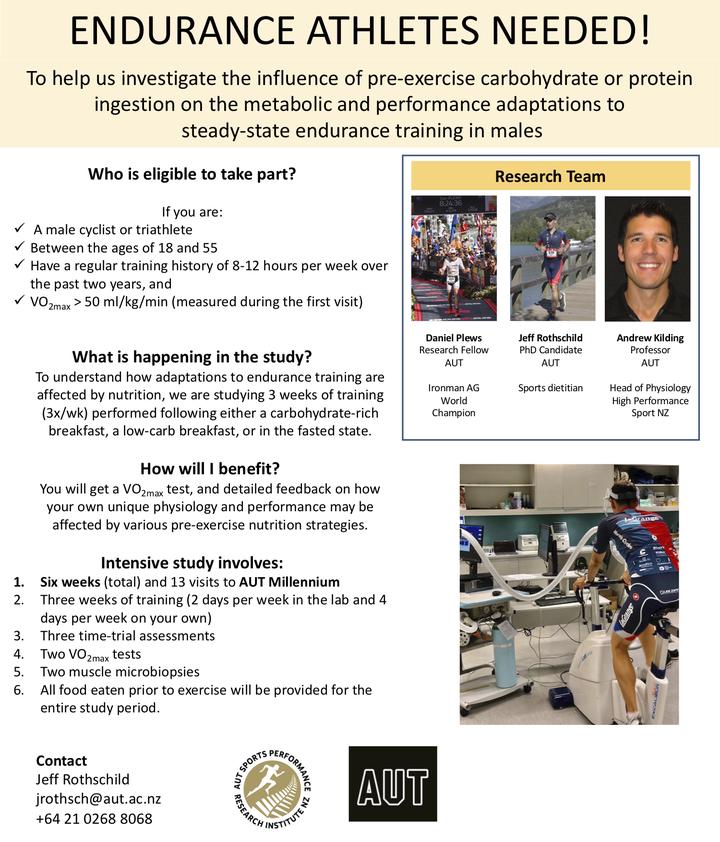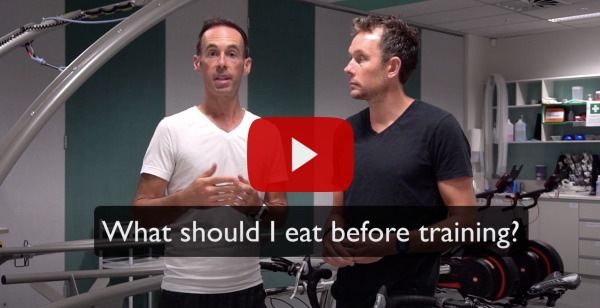
What should I eat before training?
To study what cyclists should eat before steady-state endurance training sessions, and how it affects their training adaptations, we are looking for cyclists to participate in a study at AUT Millennium on Auckland’s north shore!
There is surprisingly little research in trained cyclists looking at things like fed vs. fasted training and how that affects your training adaptations.
During the 3-week block of training, you will be randomly assigned to one of three pre-exercise nutrition groups - a carbohydrate-rich breakfast (e.g. bread, jam, and sports drink), a protein-rich breakfast (e.g. protein powder and peanut butter), or training in the overnight-fasted state. This will be consumed before each of the in-lab interval training sessions.
The study is six weeks in total, which includes 13 visits to AUT Millennium.
Week 1 (pre-testing): Two visits (VO2max test and time-trial)
Week 2 (pre-testing): Two visits (Muscle biopsy and time-trial)
Weeks 3-5 (training block): Two in-lab interval sessions, four at-home low-intensity sessions per week for three weeks
Week 6 (post-testing): Three visits (VO2max test, muscle biopsy, and time-trial)
All food eaten before and during exercise sessions will be provided for the entire study period.
During the 3-week training block, people will be randomly assigned to one of three pre-exercise nutrition groups - a carbohydrate-rich breakfast (e.g. bread, jam, and sports drink), a protein-rich breakfast (e.g. protein powder and peanut butter), or training in the overnight-fasted state.
This meal (which I will provide) will be consumed before each of the four low-intensity training sessions per week, which will be done on at home (and send me the .fit file).
Before the in-lab HIIT sessions people will be given a standardized breakfast to consume, and the total time in the lab will be less than 1 hour per session.
This way, we can isolate the effects of the various pre-exercise nutrition choices on low-intensity training adaptations, but in the context of a real-world training plan that includes both high and low-intensity training.
Beyond the prescribed sessions, we also allow up to four additional hours of low-intensity training per week (these can also be runs or swims).
I appreciate that this study will require a big commitment and know that participants will get a lot from it. The training program is designed to make you fitter over the 3-week period, and provide unparalleled insight into your own unique physiology. Adaptations will be measured using pre- and post-training VO2max (a measure of overall aerobic capacity), 30-min time-trial power, and muscle biopsy (which will show us how things inside your muscle respond to the training). We are also interested in seeing how things like fat oxidation and your ventilatory thresholds are influenced by what you eat.
To be eligible you’d need to be a male cyclist or triathlete, between 18-55 years old and currently training 8-12 hours per week (we do have two other studies currently going at AUT looking for women).
Please reach out for more info at jrothsch@aut.ac.nz
